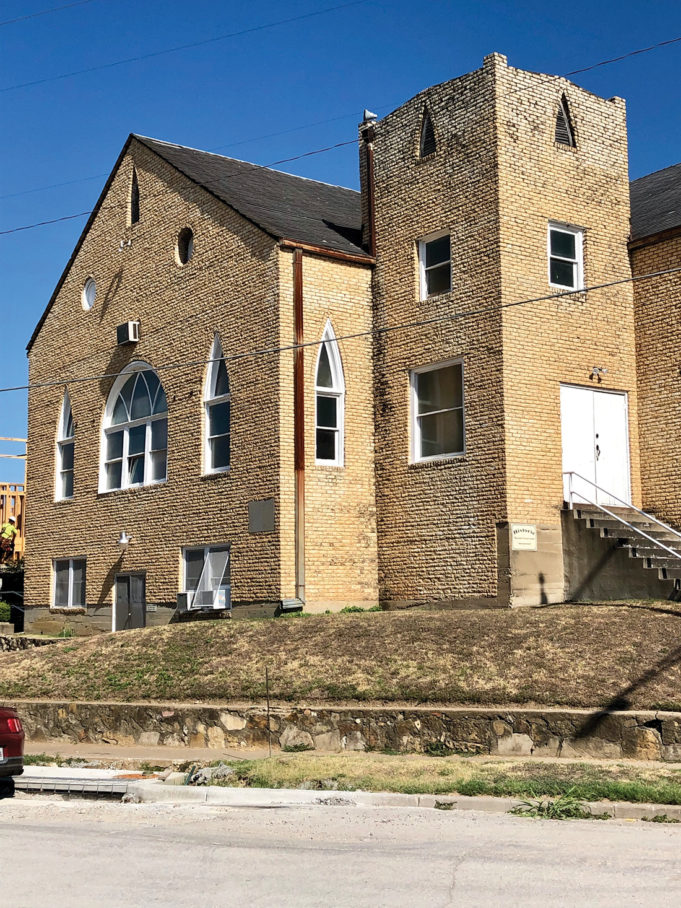A coalition of organizations seeking to redefine city funding and the meaning of public safety may want to look to the past for answers.
A 2003 report prepared by consultants for Fort Worth City Council may have not foreseen the movement to “defund” the police. In fact, the report by Memphis-based Looney Ricks Kiss was just a critical examination of historic preservation policies chock full of wonky suggestions such as reforming the city’s Landmarks Commission and offering tax incentives for rehabilitating buildings. Yet two suggestions stand out for being particularly prescient for this moment.
The first criticized the use of public funds to tear down crime-ridden commercial and residential buildings deemed “crack houses.” Funding for the commercial demolition program ended the year the report was issued and for the residential program in 2007. No data show whether funds were used to demolish historic buildings in the name of crime prevention, but the million-plus taxpayer dollars dedicated to the demolition –– and not retention –– of certain structures is still problematic.
Which makes a second suggestion in the 2003 report timely. In the official county history book, the Tarrant County Historic Resources Survey, the city’s story –– compiled from oral histories, deed records, and photographs –– lacked diversity. To rectify this, the report says, “The diversity of the community’s history is part of what makes such a compelling story, so future interpretation should emphasize that point.”
The takeaway was that the city’s book must include the stories of marginalized communities and their buildings.
While community members have actively though unevenly added diverse ethnic oral histories to the city’s archives in the downtown library, the official push for a more diverse narrative has lagged. That shows in overall process of determining what is and isn’t historic, which should be inclusive, ongoing, and community-driven.
Currently, that diverse history is not preserved in the way of other structures and even whole neighborhoods. The process for identifying historic sites has also largely fell on private citizens and groups like Historic Fort Worth, a nonprofit that promotes awareness, education, and stewardship of the city’s history. Among the few historically Black buildings on Historic Fort Worth’s most endangered places list is the Wayside Church of God in Christ. Shaped like a crucifix, the Gothic church is the last remaining structure from the historic Trezevant Addition on the Near Southside, but its location, tucked behind the rapidly expanding Hospital District, puts it at risk for development. Just as bad, Wayside is only visible from Rosedale Avenue going west and accessible through a series of back roads.
There’s also the yellow brick Grand High Court of Heroines of Jericho, one of my favorite buildings in the city. It’s home to a women’s community service and social club. It also just has character. With wide-eyed front-facing windows and small semicircle entrance in between, it looks a little bit like a peering cat. That small entrance, with its door oddly on the left side, also resembles the White House.
There are plenty of other endangered historic Black sites not on the list, however. On Houghton Avenue, in the historic Como neighborhood, the gigantic Pleasant Mount Gilead Baptist Church, built in 1953, and the shotgun Jubilee Temple CME Church, built in 1962, are in an area eyed by developers for renovation.
In the most egregious example of a historic Black neighborhood’s neglect is Mosier Valley. Straddling the line between Fort Worth and Euless, it was one of the first towns in Texas where freed slaves settled. Six years ago, Fort Worth announced funding for a sorely needed park commemorating Mosier Valley’s importance to the city’s Black history. During the six years since construction began, the amount of industrial permits in that area that have been issued have outweighed progress on the park. (Perhaps the city should consider calling it “Mosier Valley Industrial Park.”)
In another instance, when Fort Worth officials tried to preserve history, they backtracked. In 2007, the Stop 6 neighborhood was designated a historic district, which comes with a 10-year tax break for rehabilitated buildings. In 2016, the council dedesignated the historic district, the first time the city has done so.
The argument for removing the designation was that the district prevented economic development. Councilmember Gyna Bivens, who grew up in the neighborhood, spearheaded the push. She has been an advocate for development for the long-neglected district, bridging the multiple disparities between Stop 6 and similar neighborhoods. Compared to the far better off neighborhoods in the city, she has a point. She’s fast-tracked the efforts, and it’s shown: Brush and trash have been removed, and building permits are up. Good.
But if removing a historic designation is what it takes for long anticipated development, then that shows a historically Black neighborhood was not a priority and that historic preservation is truly a white man’s game. That’s the fault of a city, not a neighborhood. Funding the promotion of and preservation of Black spaces is one way of reimagining public safety budgets. As Fort Worth looks to reshape itself, the city must reckon with its past and how it determines whose history is worthy of preservation. That hopefully means also prioritizing our outdated, exclusionary approach to historic preservation and public safety.
This story has been updated to reflect one error.












